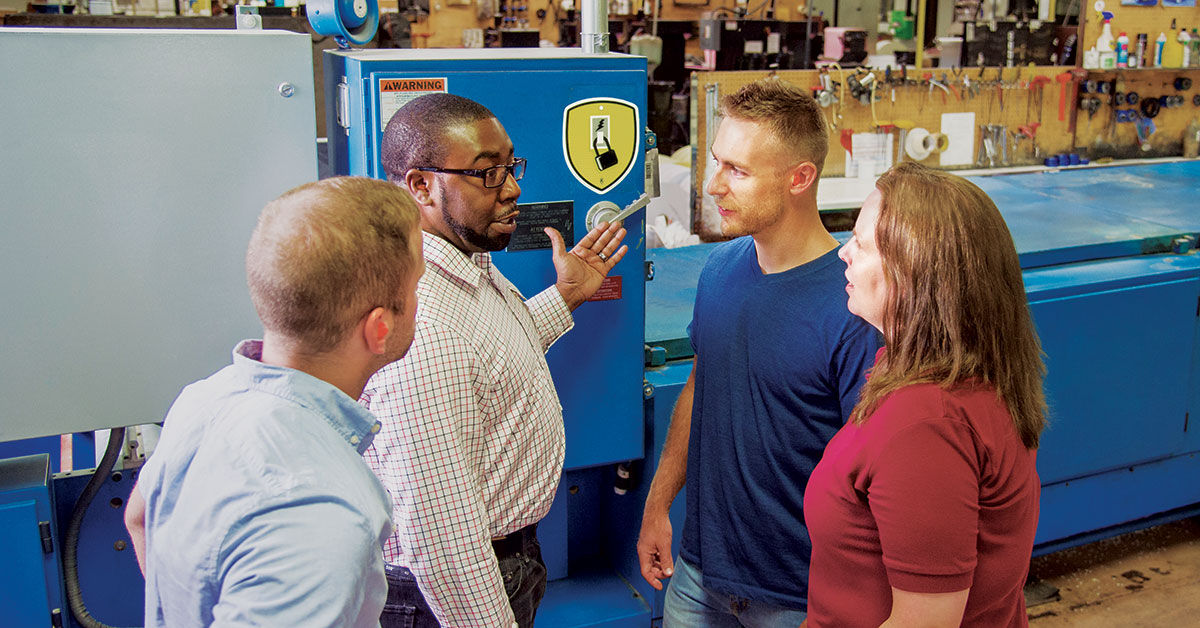Tips for delivering effective training
Date Posted: 07/27/2020

As a safety professional, creating and delivering training may not be your favorite activity. And you’ve probably heard grumbling from workers who must spend an hour (or more) attending a training session. You can find many suggestions for making training effective, and you might not be able to incorporate all of them, but consider the following to determine if any could be applied during your training.
Keep each training session short.
When possible, deliver training in smaller chunks, with sessions lasting no more than 10 or 15 minutes. If you deliver an hour-long session, the attendees might only remember three points. So, why not deliver a short session that covers only three main points? Some topics take longer to cover, but information can often be broken up and delivered in several doses. Reducing the amount of information delivered helps workers stay focused, reduces disruption of productive work time, and avoids overwhelming trainees with information that they may not remember (and therefore won’t use on the job).
Personalize the training.
This doesn’t mean personalizing the material to each individual, but rather explaining how the information relates to them. The more that trainees can relate to the content and see how it impacts them personally, the more they’ll understand it and recognize the value. If the cannot see how the training applies to their jobs or how to use the information, they’re less likely to follow it.
Follow up with trainees.
Revisit the topic after a month, checking on trainees to determine if they remembered and implemented what they learned. Trainees might even have questions based on their attempts to apply the new knowledge. If they weren’t sure how to apply it, or didn’t incorporate the new information, then they aren’t getting the benefits. Also, if you’re delivering information in several short sessions, each meeting allows you to review the material covered in the previous session and answer any questions.
Give refresher training as needed.
Many OSHA regulations require training, but most do not specifically require refresher training. Even so, refresher training may be necessary. Keep in mind that refresher training frequency could differ based on the experience of the worker and the nature of the topic. For example, a new hire might be given refresher training on hazard communication after six months, allowing the worker to give feedback and ask questions. Conversely, if an experienced workforce understands the company’s lockout procedures, the affected employees might be given refresher training every two or three years.
Encourage supervisor support and recognition.
The value of training and the importance of following procedures must be reinforced regularly. Supervisors are in the best position to provide daily reinforcement, feedback, and support. Although supervisors must correct any violations, they should also recognize workers for doing things properly. If supervisor feedback is always negative for “breaking the rules,” then employees will likely grumble about all the rules. Supervisors should give positive feedback for doing things well and recognize accomplishments, such as following rules or applying the safety training.
How Safety Management Suite Can Help
Numerous OSHA regulations require employers to provide training. The training area in the J. J. Keller® SAFETY MANAGEMENT SUITE offers a number of Classroom Program courses with all of the elements to you need to deliver that training, from a course outline to exercises and quizzes for the trainees.
E-mail Newsletter
Sign up to receive the weekly EHS Insider email newsletter for safety articles, news headlines, regulatory alerts, industry events, webcasts, and more.